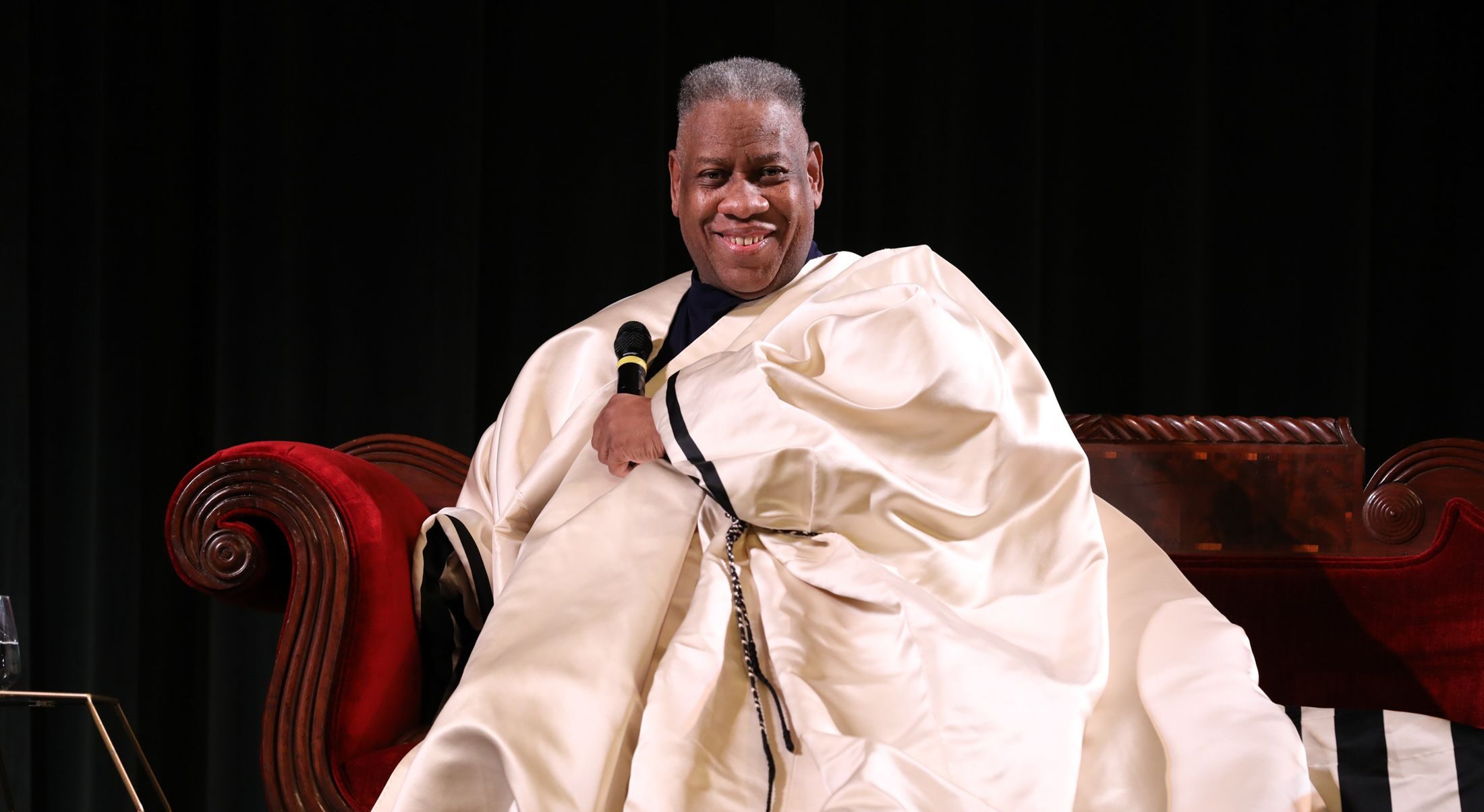For those who regard themselves as having taste, a secret part of the soul imagines that one day, after we die, all our precious objects will be assembled to be admired. The art, the tchotchkes, the books, the adornments, the lucky charms from travels abroad and the special serving dishes that each have a story—perhaps people will gaze upon all of them and think, “What a collection! What a beautiful mind! A wonderful life!”
Most of the time that never happens. Our belongings are mere things, made precious by what they mean to us alone.

But André Leon Talley was not like the rest of us. A fashion editor at Vogue, W, WWD, Interview and Vanity Fair from 1975 to 2013, he spun style to the delight of readers for decades. He was an influencer before we called them that, his taste shaping ours in ways that made what we wear fun, silly and exciting. His, gathered for a charitable auction at Christie’s, were worthy of the museum treatment, with a live sale on Feb. 15 totaling more than $1.4 million. Bidders called in from around the world.
Talley was the rare example of someone who wasn’t born into wealth, fame or beauty but who nevertheless managed to live a life filled with people and objects so spectacular that aspirants were willing to pay a premium to be associated with it all. The treasure trove of his caftans, art and luxury luggage was sold to benefit a pair of Baptist churches attended by Talley during his life. (He died at the start of 2022 at age 73.) There were 66 items in the live sale, and a further 350 in an online auction that will end on Feb. 16.
The live sale soared above estimates; official predictions for estate auctions along these lines are set deliberately low by auction houses. (For instance, a pair of Joan Didion’s Celine sunglasses recently auctioned in Hudson, New York, were listed for around $1,000 and ended up selling for $27,000.) Even as the live sale concluded, bidding at the online Talley sale continued to spiral upward.

A New Crowd for Christie’s
At the evening preview of the sale on Feb. 9 at Christie’s in New York, fashion editors wore black and influencers wore everything else. (Fittingly, at the check-in, social media types had their own line.) The onlookers swapped gossip about the mounds of luggage and throw pillows so lovingly lit and artfully arranged. Selfies were taken with many items, which is, I imagine, what will happen with frequency when they find their new homes. I heard multiple Christie’s team members remark on how the attendees at the party were much more diverse (read: Black) than the stodgy, mostly White art crowd that usually shows up for such events.
The party and sale are bittersweet triumphs. Talley would have surely been proud of how his items sung in this final gala performance. But the lovely items came at a cost: At the end of his life, he lost his connections to the people who had given him many of them and created the memories around them.

Objects of Desire
The sale was a sumptuous feast of freebies Talley had accumulated over his years in magazines, memorabilia from a life that had already disappeared before he died. There were dozens of trunks from Louis Vuitton, many of them monogrammed, plus a wall of alligator coats from Prada and artwork by Andy Warhol, Herb Ritts and Ruben Toledo. A Hermes bicycle (final price: $5,292) was parked near a vitrine of audacious Chanel jewelry (a pair of cuff bracelets sold for $11,340) and just across the room from a “silver metal & shearling robot,” also by Prada. (Sale price, $13,860.) There was an amethyst geode the size of a cocker spaniel. And there were his signature caftans, many by top designers, looming on walls and hung gloriously amid the crowd. Talley was a wide man, but he was also tall—6 feet, 6 inches, to be exact—so the vast amount of fabric in these robes made all other humans in the room look tiny and insignificant. In memory as in life, he is simply larger. The caftans ranged in estimates amid the low thousand dollars, though several sold for more than $15,000.

The Louis Vuitton and Chanel items were hallmarks of his yearslong friendship with Karl Lagerfeld, the designer who at times helmed both French houses. (Lagerfeld was famous among friends for giving gifts—and occasionally demanding their return.) There was artwork featuring the other great mentors of Talley’s life, including an Annie Leibovitz portrait of Anna Wintour that auctioneer Richard Nelson said was “hung prominently in his home.” It sold for $25,200. A photo of Talley at a party with Andy Warhol went for $13,000, and a spectacular Warhol mixed-media portrait of the late Vogue editor Diana Vreeland on a rearing horse, called Diana Vreeland Rampant, went for $94,500. (It had a pre-sale estimate of $30,000 to $50,000.)
A Lonely Retirement
It was under the wings of these people that Talley thrived during most of his life; he was a pioneer, a Black man very alone at the top of the fashion world. In his position, he pushed for better representation of diverse bodies in the pages of magazines, and helped bring models Naomi Campbell and Veronica Webb to the forefront. He was the first Black man to be creative director of Vogue, a position he held from 1988 to 1995.
But he needed the generosity of privileged powerhouses such as Lagerfeld, Warhol, Vreeland and Wintour, to open the door and save a space for him. In his memoir, The Chiffon Trenches, he tells of glorious years traveling with Lagerfeld and giddy times putting Vogue together with Wintour. For decades, he was one of the only people Wintour trusted at her side as she shopped or got dressed for major events.

The problem in relying on the grace of powerful people with towering egos is that grace is what they all eventually lack. Talley was shut out by Lagerfeld in the mid-2010s after an awkward conversation at a party; he was stripped from the invite list to Chanel fashion shows, where Lagerfeld was then creative director. The two never spoke again. Talley and Wintour ran afoul of one another in 2018, when she took away his spot at the Met Gala red carpet. According to his book, Talley spent his final years living in a rented house in White Plains, New York, running out of money, isolated and removed from his once-commanding life in fashion.
The Chiffon Trenches ends bitterly. Talley admits to feeling abandoned by the fashion community—not offered work, not paid appropriately for gigs and not receiving the glamorous invitations that used to embody his lifestyle. He offered interviews excoriating Wintour for leaving him behind because, he suspected, he had become too old or too fat. (To replace Talley on the Met Gala red carpet, Wintour chose a YouTube star who was barely in her 20s.) Talley was left with his things: beautiful trunks no longer used for travel, art signed to him by long-dead creative friends and a leather-wrapped Hermès bike that was never ridden. They were all immaculately maintained, a testament to a beautiful mind, exquisite taste, and a life that was, for a time, truly wonderful. Nothing was broken, nothing lost—not so easily as a decades-long friendship. But oh, what glorious things they were.
To contact the author of this story:
Chris Rovzar in New York at crovzar@bloomberg.net
© 2023 Bloomberg L.P.








